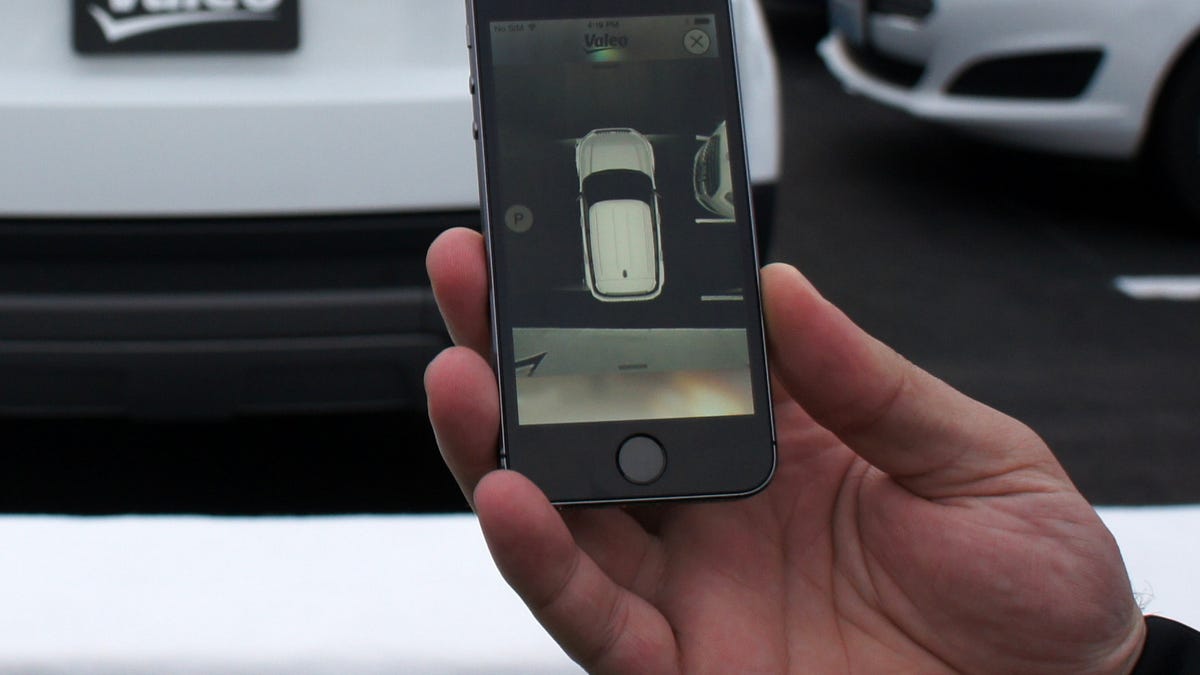Valeo shows iPhone-controlled parking at CES 2014
Automotive equipment supplier Valeo takes the tedium out of parking with its self-parking system, which can be activated from an iPhone.

LAS VEGAS -- Parking and heavy traffic compete as the two most tedious driving situations. At CES 2014, automotive equipment supplier showed how it could alleviate drivers of one of these tasks.
In the driverless car demo area, Valeo had a Range Rover Evoque equipped with its technology. A staff member, standing nearby, simply swiped a control on an iPhone app, and the Evoque began driving along a line of cars, looking for a parking spot.
When it found an open spot, it drove past, then reversed and turned its wheels, backing into the spot. It was even able to correct, moving forward a bit then reversing again, to ensure is was evenly between the cars to either side.
The car was acting completely independently, with no programmed routes. Valeo noted that, while this demonstration had the car backing into the spot, it could also parallel park or nose in, both actually easier maneuvers than the one demonstrated.
The car was equipped with 12 ultrasonic sensors, six in back and six in front, a laser scanner mounted in the grille, and four cameras. The cameras and ultrasonic sensors are all equipment that can currently be found on a production Range Rover Evoque.
Valeo added a CPU to analyze the sensor data and determine the best route into the spot, and a control unit for steering, braking, and accelerating. The CPU was no larger than the car's standard engine control unit.
The smartphone app was a convenient way for a driver to initiate the system, although Valeo could also build the control system into a key fob. For the demonstration, Valeo had the phone communicate with the car over Wi-Fi, although any communication protocol would work.
This capability could easily extend to having the car maneuver out of its parking spot and drive up to the owner. Valeo supplies some of this technology to BMW, to enable the i3's automated parking capability. No automaker has yet announced the driverless parking capability.

